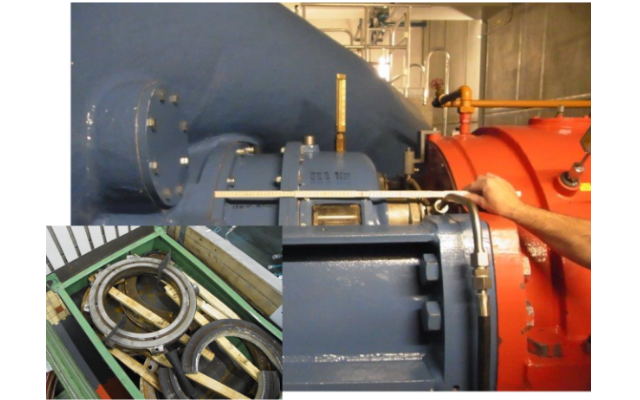Author: Henri Azibert
When time comes to repair a piece of equipment, a difficult decision to make is whether parts should be replaced with original equipment manufacturer (OEM) parts, substituted with after-market offerings, or upgraded. The answer, as often is the case, is that it all depends.
It first needs to start with an accurate evaluation of the existing situation and state of the equipment. Several questions are useful to go through this exercise:
Is the current life of the equipment satisfactory?
Was the performance adequate for its purpose?
If the answer is ‘yes’ to both these questions, then going for the OEM replacement is most likely a wise decision. The temptation to go for a less expensive alternative should be resisted, or at a minimum, investigated with thorough scrutiny. The original manufacturer has full understanding of the machine with knowledge of required tolerances and material properties. An alternative offering generated from a reverse engineering exercise is always risky, as variations in manufacturing can easily bring parts outside the necessary tolerance range and potentially result in compromised performance and/or premature failure. Changing the design entirely for something else that might fit is also risky as its interaction with the rest of the equipment has not necessarily been tested or proven.
This does not mean that it should always be avoided. There are aftermarket suppliers that have the knowledge and resources to provide quality superior parts. It could provide improved performance. Remaining variables will be price, delivery, and support.
Some other questions often come into play:
Has any change from initial requirements occurred?
Are any changes planned?
The OEM replacement parts will, by definition, only provide the performance of the original equipment. So, if some added constraints are imposed, such as higher pressures and speed, or increased production volume, the possibility that the OEM parts will not perform adequately needs to be seriously investigated. It could be that equipment was under-stressed and capable of achieving much more. It could also be that the equipment was at or near its operational limit; in which case, trouble could loom on the horizon.
Here again, the first place to start will be the OEM supplier. A quick call, or check of the specifications, can determine if changes are required. The OEM will have a good understanding of the interaction that parts with different ratings can have on the rest of the machinery. If no satisfactory or optimal answer is received, then it is time to check with colleagues, trade publications, and trade associations. An internet search could turn up just the right upgrade along with a slew of over-rated inferior products. Caution is in order. When a candidate replacement is identified, if it does not come from a reputable or known supplier, asking for and checking references can help in making a good decision.
A few more considerations will warrant attention.
Are there any special idiosyncrasies of the application where another design may be better adapted to handle the conditions? It could be different materials, modified geometry, distinctive operating characteristics. A careful study of the mode(s) of failure can direct to necessary changes to provide improved life and reliability.
The life of industrial machinery can be quite long. The life cycle of industrial equipment is usually around twenty-five years. A lot can happen in a quarter of a century. And then, some large installations can last much longer, so long that the original equipment manufacturer no longer can provide replacement parts. The OEM might even have gone out of business.
Is there newly developed technology available? Perhaps technology from an adjacent field can be adapted. As an example, non-contacting gas seals were developed from bearings operating principles. There could be opportunities for significant upgrades. Some energy savings might be possible; reduced maintenance schedules could be achieved. Modern monitoring or remote surveillance can be integrated in replacement parts for improved safety or reliability.
The need to control fugitive emissions has become imperative and control technology has been progressing at a rapid rate, faster than many original parts are tagged to be replaced. Tighter emission regulations may have been enacted and come into effect since the initial installation. At that point, when it comes time for replacement, performance not only can, but must be upgraded.
Typically, the longest possible operation is desired, but what if the system is scheduled to be shut down shortly? Or how about if you need replacement parts right away, and the only thing that matters is how fast you can get back up running and get production going? Then, all that has been said above becomes irrelevant.





Comments